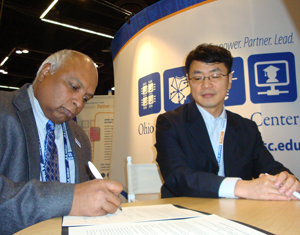OSC Announces 2006 YWSI Middle-School Participants
The Ohio Supercomputer Center (OSC) has selected 18 of Ohio's middle-school girls to participate in its Young Women's Summer Institute (YWSI) held on July 30-August 5, 2006 in Columbus.
YWSI is a weeklong program sponsored by OSC for middle-school girls in Ohio. It is designed to promote computer, math and science skills as well as provide hands-on experiences. YWSI helps girls develop an interest in these subjects by allowing them to work on a practical, interesting scientific problem using the latest computer technology.
